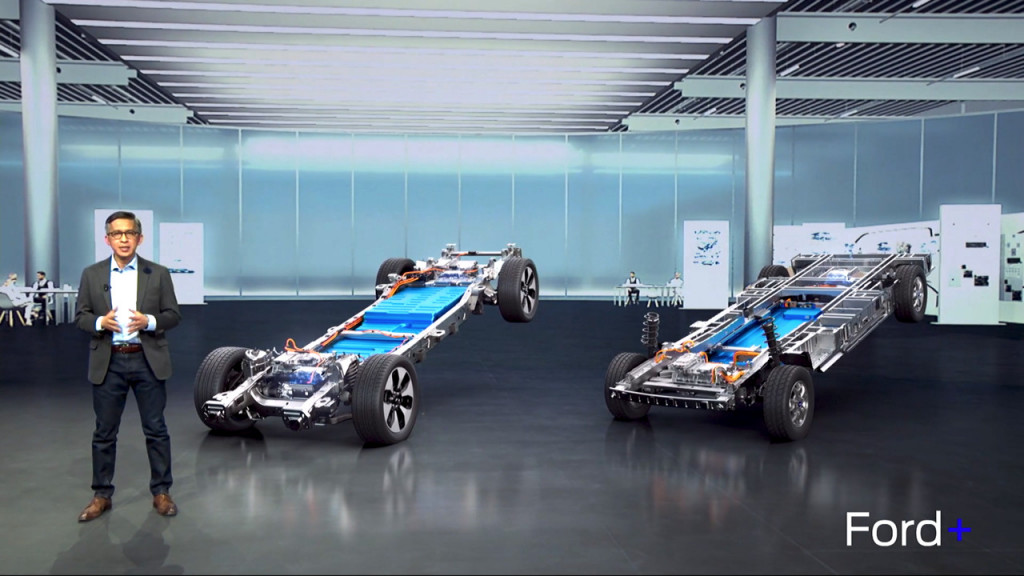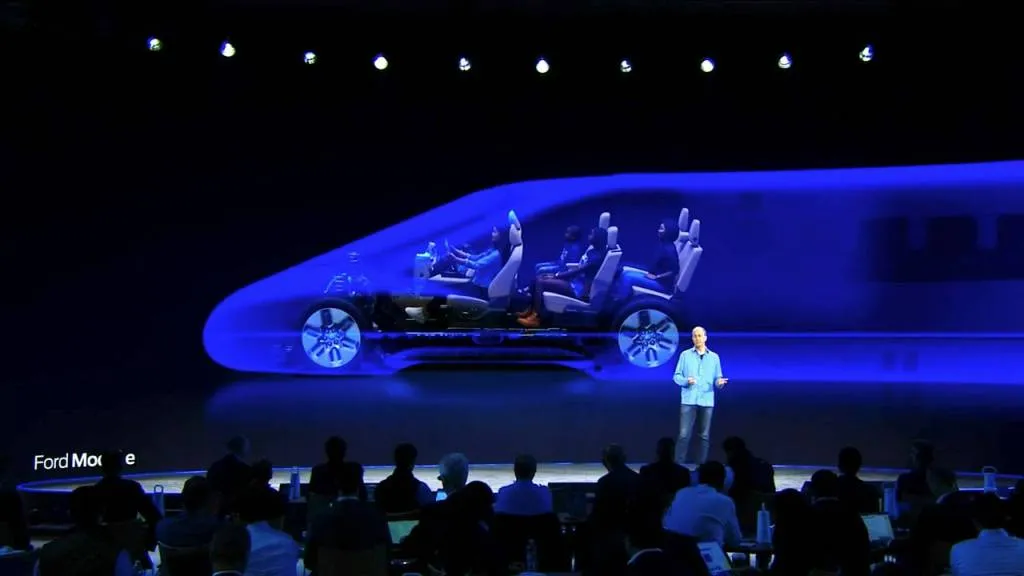

Ford seeks smaller, lower-cost EVs to rival $25,000 Tesla, China
Is Ford shifting its electric vehicle efforts away from large EVs like the F-150 Lightning, and focusing on translating the ethos of the Model T into the EV era?
Taken at face value, remarks from Ford CEO Jim Farley on Tuesday suggest that may be the case. During the company’s Q4 2023 earnings, Farley and top executives summed that the automaker plans to shift the launch timing on some of its Gen 2 electric vehicles, with more attention paid to the cost and efficiency of its EVs—given, as was mentioned multiple times, a “new market reality.”
The company revealed it’s also reassessing vertical integration and battery supply, and “betting on new chemistries and capacities.”

Ford EV plans for Europe
Fewer large Ford EVs, emphasizing smaller products
Farley noted that Ford is going to spend less capital on larger EVs and develop fewer of them, focusing its larger EV efforts on “geographies and product segments where we have a dominant advantage like trucks and vans.”
Then he included a nod that appears to be looking beyond the Gen 2 EVs that are currently being finalized, to the company’s Gen 3 EVs that are apparently just at the platform stage.
“Now this is important because we made a bet in silence two years ago, we developed a super-talented skunkworks team to create a low-cost EV platform,” Farley said, referring to a team that Ford separately verified to Green Car Reports is led by Alan Clark, who led early development of the Tesla Model 3. “It was a small group, small team, some of the best EV engineers in the world. And it was separate from the Ford mothership; it was a startup.”
“And they’ve developed a flexible platform that will not only deploy to several types of vehicles but will be a large install base for software and services that we’re now seeing at Pro,” Farley added.

Ford CEO Jim Farley
What Model E was about all along?
Although Farley is referring to a new, secret platform, it does sound a lot like what Ford laid out clearly nearly two years ago. In May 2022, Ford announced that it was breaking out Model E as a distinct business that will “accelerate innovation and delivery of breakthrough electric vehicles at scale, and develop software and connected vehicle technologies and services for all of Ford.”
One of the things Model E was tasked with was to “create ground-up, breakthrough electric vehicles,” including EV platforms, batteries, e-motors, inverters, charging, and recycling, and to employ “a clean-sheet approach to designing, launching and scaling breakthrough, high-volume electric and connected products and services for retail, commercial and shared mobility.”

Ford EV platforms for mid-decade, presented by Hau Thai-Tang
So while Farley is reiterating that Model E is filling its purpose, Ford may have shifted to be even more focused on affordability since 2022, when EVs were in short supply and being sold with dealership-imposed premiums, well before a $25,000 Tesla was pegged for Texas production, potentially next year.
“All of our EV teams are ruthlessly focused on cost and efficiency in our EV products, because the ultimate competition is going to be the affordable Tesla and the Chinese OEMs,” Farley summed.
At the time of Model E’s formation, Ford said that it was targeting an annual production of 2 million EVs by 2026. To get there, or anywhere close, at the present trajectory, Ford would need a much more affordable, mass-market EV. The automaker reported that it sold 71,808 EVs in 2023. One other higher-volume model, its European Ford Explorer EV, arrives next year, and Farley anticipated more EV sales for Ford Pro and in Europe this year.

2025 Ford 3-row SUV –
“Breakthrough efficiency” for Gen 2 EVs
All that said about Gen 3, Farley did tout the strength of its upcoming Gen 2 products, which likely still arrive in 2025. The automaker has previously confirmed a full-size electric pickup codenamed T3 and referred to as the Millennium Falcon of trucks, and a three-row electric SUV due in 2025 with 350 miles of range from a 100-kwh battery pack.
“Our next Gen 2 products will be profitable in the first 12 months of their launch,” the CEO affirmed.
“And those products will have breakthrough efficiency compared to our Gen 1 products,” Farley added. “And they’re going to be packed with innovations that customers are going to be excited to pay for.”
Add a comment Cancel reply
Related posts


Electric SUVs: Top 6 Models for Family Trips











